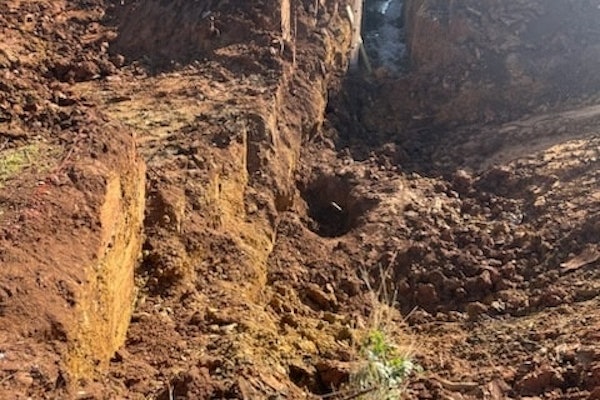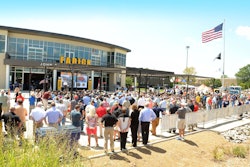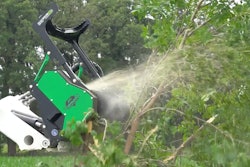Of all the machines in the earthmoving world bulldozers, particularly large ones, may have the greatest variation when it comes to owning and operating costs.
While the initial purchase price of a big dozer is a relatively fixed quantity, everything else from there can vary greatly. A backhoe owner often charges by the hour, but dozers are also evaluated by how much material they move – tons or yards per hour. Instead of dollars per hour, dozer owners want to know tons per dollar.
So in this article we won’t equate dollars to hours worked so much as look at the relative percentages of different owning and operating costs and help you figure out how to most effectively run and maintain your dozers to get the maximum work out of the minimum dollars spent. We’re also concentrating on big dozers here, sometimes referred to as production dozers, such as Caterpillar’s D6 through D11.
To get into the details of dozer costs, Caterpillar put together a team of experts for us including Chub Dietz, marketing/product consultant; Phil Hansen, mining commercial manager; Tom Neeley, sales support manager for undercarriage marketing and Keith Heiar, tractor products marketing.
If there is an overall philosophy that this group holds to it’s that managing your owning and operating costs is best done through a strong relationship between the manufacturer, the contractor and the dealer. Dozers of equal weight and horsepower can more or less push the same load, but to get the most material moved per dollar you have to maximize productivity and minimize cost. Where there is value to be gained – money to be saved and productivity to be enhanced – is in working to spec the right machine for the job, making sure the operator is trained and coordinating service and maintenance with your dealer, Dietz says.
Undercarriages
“Picking the right undercarriage and good undercarriage maintenance are critical to achieving the lowest operating cost per hour,” Neeley says. In an ideal world all the undercarriage parts would wear out about the same time, but they don’t. These can be replaced or refurbished in separate maintenance procedures, but most contractors don’t want to pull the machine out of the dirt so often.
The catch is that every choice you make in spec’ing an undercarriage is going to end up changing the operating costs and the amount of downtime. There’s no one universal solution for everybody. For some it may make more financial sense to run their pins and bushings to destruction. Others may benefit from a long-life pin and bushing assembly like Cat’s SystemOne. Either way, the choice of one component in your track will influence your choices for the rest of the components. Every undercarriage needs to be custom designed, Neeley says, which is why Cat dealers offer what they call their Custom Track Service that takes all these variables into account, runs them through a spreadsheet calculator that shows you what the different options do to your undercarriage lifecycle and cost per hour.
Operators and fuel
Wages and diesel account for 75 percent of your operating costs for a D6T and 80 percent for a D11T. (see the charts on page 60-61). There is not much you can do about the price of either, but there is plenty you can do to maximize the productivity and profit you get from these costs. Understand first, however, that fuel burned equals work done. The more fuel you’re burning, the more material you’re moving, so high fuel consumption is not necessarily a bad thing, Hansen says.
By giving your operators advanced training in dozer techniques you can increase the amount of work they do without increasing what you’re paying them. A good operator spends less time blading air and more time moving dirt, Hansen says, and at the end of the day may produce 10 or 20 percent more work for the same amount of wages and fuel expended. A well-trained operator will also take better care of the undercarriage and extend its life.
Likewise a good cab and ergonomic controls boost productivity. “Twenty years ago, a lot of contractors bought machines without cabs,” Dietz says. “But you can look at the charts and see how important operator comfort is to productivity. Saving money on the cab is really penny wise and pound foolish.”
Safety, as it relates to operators, technicians and any employee, is also a critical part of productivity and availability, Hansen says. Even a minor accident can put a machine or a site out of operation for as much as a day. A history of accidents or safety incidents will drive up insurance costs, and drive away good employees.
And don’t forget about GPS. These machine control systems insure that you only move dirt once and maximize the return on your owning and operating costs because they eliminate errors and rework.
Maintenance
Other than the undercarriage considerations, it’s not worth a lot of effort to try to substantially lower your maintenance costs beyond just following good preventive maintenance practices. These on average turn out to be about 2 percent of your O&O costs on a D11 and 4 percent on a D6. Your goal in good maintenance should be to increase uptime rather than trim costs.
The best bang for the buck on big dozers comes from condition-based maintenance, Hansen says. But rather than push a component right up to the edge of failure, take advantage of some of the new monitoring systems to diagnose and alert you to a problem long before the machine’s performance or components start to suffer. These early warning systems not only save you from expensive catastrophic failure, they give you a bigger window of opportunity to schedule the downtime and replacement machines.
The electric alternative
If fuel costs continue to rise, contractors will have to rethink what types of machines they use in moving material. One intriguing solution coming down the pipeline is electric-drive equipment.
Caterpillar unveiled an electric-drive D7E dozer at the ConExpo/ConAgg trade show this spring and plans to start selling them in 2009. The D7E isn’t a hybrid with a dual power source but rather uses a diesel engine that powers a generator that energizes a solid state power inverter and electric motor, replacing the traditional torque converter and transmission.
The company anticipates the D7E will deliver up to a 20-percent improvement in fuel consumption with 10-percent lower lifetime owning and operating costs, Heiar says. Since the engine operates in a much narrower rpm band, it should also last longer between rebuilds. As the price of fuel goes up, the cost efficiency of the electric-drive dozer will get even better and also allow contractors to continue to use the right machine for the application rather than switch to excavators and artics or other machines to save on diesel costs on short-distance applications.
RAINING ON PROFITS
Even something as innocuous as the amount of rain in a season or the diligence with which you do maintenance can have a measurable impact on undercarriage life and lifecycle costs.
In the example below, two nearly identical Caterpillar D6Rs were run in nearly identical conditions (65 percent hard sand, soil pH of 7). The only difference: the amount of rain on the jobsites. The more moisture in the soil, the more the soil gets up, in and around the rollers, sprockets and moving parts of the undercarriage; and the more wear it experiences. Just an extra inch of rain per month cuts the undercarriage life here by almost 25 percent and drives up the per-hour costs accordingly.
Dozer in dry conditions:
Annual precipitation: 30 inches
Estimated life: 7,300 hours
New parts cost: $22,000
Maintenance labor: $2,200
Total cost: $24,000
Cost per hour: $3.32
Dozer in wet conditions:
Annual precipitation: 42 inches
Estimated life: 5,500 hours
New parts cost: $22,000
Maintenance labor: $2,200
Total cost: $24,000
Cost per hour: $4.40
When we take these same two examples and adjust them for things like poor maintenance, poor operator technique, high packing level and a too-tight track your undercarriage, life goes down and costs per hour go up by an additional 25 percent.
Dry conditions/poor maintenance
Adjusted life: 5,100 hours
Cost per hour: $4.75
Wet conditions/poor maintenance
Adjusted life: 3,800 hours
Cost per hour: $6.37
Additional tips on reducing dozer operating costs
· Spec the correctly sized dozer for the job
· Reduce packing material in the undercarriage
· Avoid excess moisture on site
· Maintain optimum track tension
· Run the narrowest shoe width for conditions
· Avoid high speed
· Maintain machine balance – equal ground pressure on both tracks
· Avoid traveling in reverse
ONE PERCENT
Not all change is equal when it comes to helping increase profits. When you review your costs and operations to see how you might get a better return on your dozer dollars, here are a few helpful facts from Caterpillar.
A one percent change in….
PRODUCTIVITY
…can result in a 2.5 to 4.5 percent change in profit.
AVAILABILITY
…can result in a 1.75 to 3.5 percent change in profit.
OPERATING COSTS
…can result in a 1.5 to 3.5 change in profit.
UTILIZATION
…can result in a 1.5 to 2.75 percent change in profit.
SELLING PRICE
…can result in a 0.5 to 0.85 percent change in profit.









